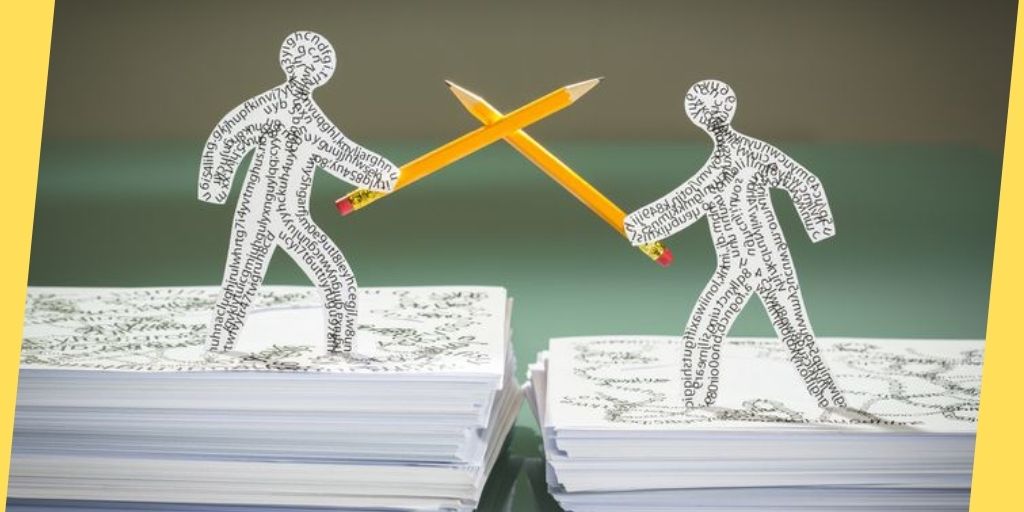Discover The Importance of Having Well-Rounded Characters While Writing A Novel

Coming up with a plotline for a novel may be easy, but creating the characters can be a hard task. You can get inspiration for plots from movies, TV series, reading other stories, or just on a random idea. However, painting a character sketch can often be tricky.
Also, creating characters is the most important part of writing a novel. You can make do with an okay plot if you have well-defined characters driving the story.
Moreover, readers love it when the characters are unique and relatable in a way. Here, we will provide some helpful tips to create unforgettable characters.
Top 7 Tips to Create Well-Defined Characters
The easiest way to create good characters is by taking inspiration from real-life people. Look at some of the likable characters and identify what traits make them so. However, you have to balance the character to not make it one-dimensional.
Nobody likes an exceptional goody-two-shoes, nor do they like an evil character who’s that way for no reason. Go through the following tips to create unique characters if you do not know how to write a good book yet.
1. Making the Characters Relatable
One major selling-point of a novel is how readers can relate to the characters in some way. It can either be due to the unique personality or some shared experience. The best way to create your character is by picking out traits from real-life people.
Try to be as dynamic as you can with the character and ensure that it resembles real life. Even if you’re writing a fiction novel, you have to make the characters relatable. This will make the readers love your story and help make the novel successful.
2. Build up Personality
Everybody loves characters that are charismatic and have an intriguing personality. It keeps the reader invested in the novel and makes them curious to know how the characters will drive the plot.
Make sure that not only the readers are drawn to the characters, but the other characters in the book are drawn as well. Try to make it known what traits reel them in and keep it subtle yet definite. Your character doesn’t necessarily have to be good-looking but does make them enigmatic.
3. Focus on the Character’s Specialty
Choose a skill or a trait and make the character good at it. It can be anything from marksmanship, detective skills, flirting, problem-solving, or other special qualities. For instance, if the character is a detective of some sort, then he should be a really good one.
They should be able to notice clues and build concrete theories in the best way possible. However, do not make it obvious but do throw some challenges along the way. Similarly, if your character is goofy, then make them the best at being goofy.
4. Create a Dynamic Character
As mentioned earlier, your character should be dynamic and 3-Dimensional to appeal to your audience. A 1-Dimensional character can make the story very stale, even if the plot is intriguing.
Your character should be sound enough to take actions based on the circumstances around them. Make them face challenges that project their character growth. This will make readers love your character as they progress through the story.
5. Create Conflicts for your Character
In continuance to the above point, create problems or conflicts to help the character evolve throughout the story. You can do this by making them commit a mistake or suffer at important plot points. Make sure that their character trait is on par with the conflicts you choose to create.

For instance, if a character has been alone for years, try to show how affection is changing them to be caring towards that person. This will make your readers sympathize with the characters and care for them. Also, make sure that the conflicts are believable for the plot and not unnecessarily created for the sake of it.
6. Emphasize on Main Character
Naturally, your initial job before writing a novel is to lay out a detailed character sketch of all the characters. However, make the main character stand out uniquely and provide extra details to them.
In comparison, try to make the other characters less intriguing but do not make them 1-Dimensional either. They should be relatable as well, but they should not be detailed enough to steal the limelight from your protagonist.
Also, create characters’ personalities based on the type of novel you’re writing. For instance, make the characters serious and broody if you’re writing a detective novel; or make the characters bubbly and energetic if you’re writing a romance novel.
All the characters should be unique to each other as well. You can easily keep track of your characters if you use novel writing software.
7. Wrap-up the Characters
As the final step, bid goodbye to your characters subtly and completely. Make sure that the character growth throughout the novel has a resolution at the end.
Also, don’t just end the novel with a fictional ‘happily ever after’. Try to make it as believable as you can. Make sure that you keep the plot in mind when you’re deciding its ending.
In the end, your readers should be satisfied with the resolution and should not be left hanging. Don’t make your characters do something that they would not do according to their personality. Even if you’re planning to surprise the audience, make sure that it is still on par with the personality of the character.
If you’re planning to write a sequel, ensure that the current part is wrapped up subtly. Nobody likes cliff-hangers. Do remember to throw in some hints for the sequel as well.
Conclusion
To summarize, it is important to create well-rounded characters for a novel as it will make the reader love your story. You have to make them as realistic and as relatable as you can so that the readers will be able to get attached to them.
A good well-defined character will help to drive the plot in a much more interesting way than you would think. Moreover, you can use book writing software to make the writing process a little easier.
They have writing tools to help you lay out the characters, chapters, sections, and other important details. They also make editing and proofreading tasks much easier.
Recommended For You
3 Ways to Be More Environmentally Friendly
Most Inside
Most Inside offers high-quality recommendations and valuable updates to enhance all aspects of your life, providing premium guidance and enriching experiences.




